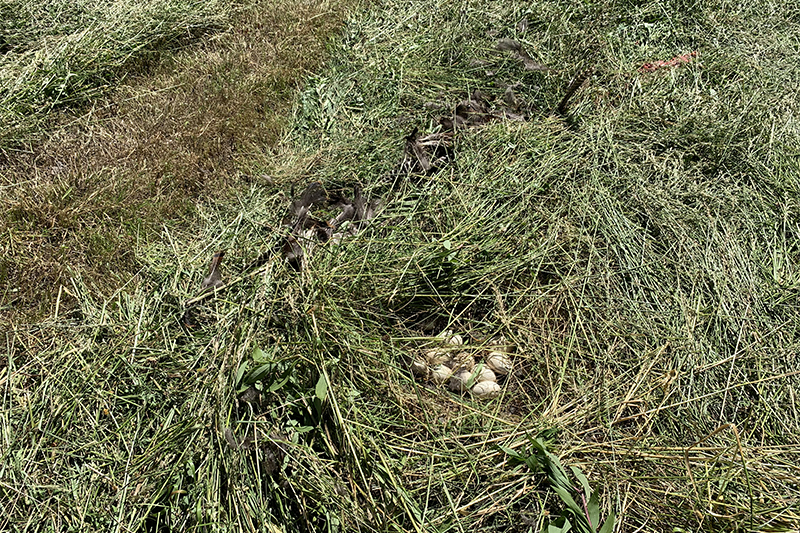
Advice from TWRA and UT Extension
NASHVILLE — Mowing or bushhogging can be devasting to many Tennessee wildlife species that nest in fields at this time of year, which include white-tailed deer, bobwhite quail, cottontail rabbits, wild turkey, and ground-nesting songbirds, such as eastern meadowlark. The Tennessee Wildlife Resources Agency says waiting until after mid-August greatly reduces the chance of killing and injuring nesting and newborn wildlife and still allows for effective field maintenance.
“Although we like to keep our lawns and other immediate homestead property looking clean and neat by regular mowing, old fields and odd areas that are left to grow in grasses, clovers and natural broadleaf plants provide valuable nesting and brood-rearing cover spring through mid-summer,” said Mark Gudlin, TWRA Habitat Program manager. “Refraining from mowing during this time not only is beneficial to wildlife, but saves you gas as you use your mower less.”
Problem spots with woody vegetation can easily be spot-sprayed or controlled without mowing the entire field. In addition, if mowing is intended to allow more accessibility, consideration should be made for mowing paths rather than entire fields. Not only will you still be able to walk around and enjoy your land, you also will retain cover that is critical to the wildlife you enjoy seeing use your fields.
Craig Harper, University of Tennessee Extension wildlife specialist, has authored a number of publications on habitat preservation and management. “A Quick Guide for Landowners: Managing Old-fields for Wildlife (PB 1855)” details management techniques for specific field conditions and species.
TWRA also has information on its website about managing habitat.